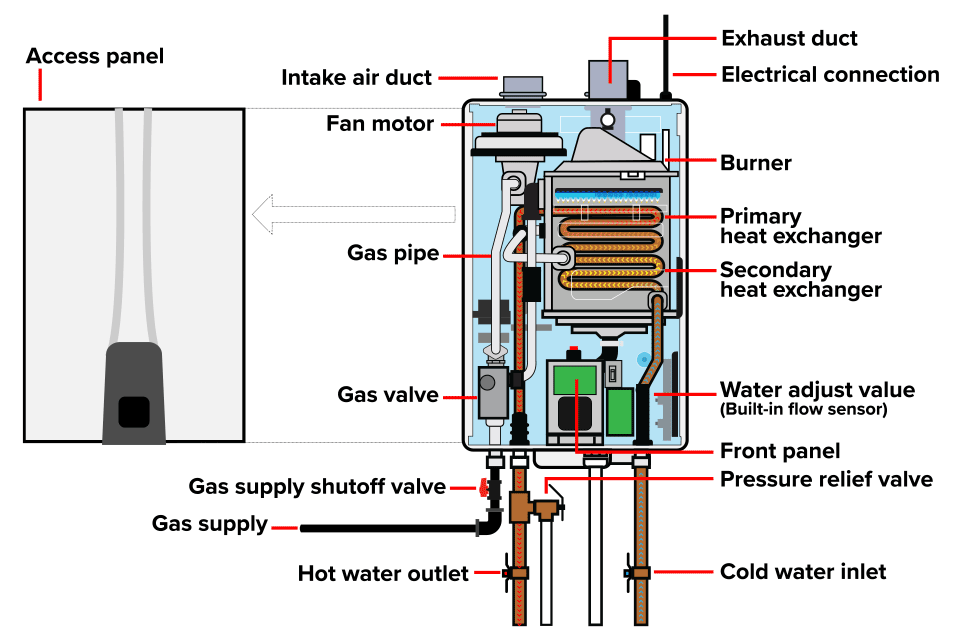
Imagine stepping into a warm, soothing shower after a long day. Now, picture that comfort disrupted by a cold, sputtering water heater. That's where knowing how to install a water heater comes in handy. Whether you're a seasoned DIY enthusiast or a homeowner looking to understand the process, this guide will walk you through everything you need to know.
Why Consider DIY Water Heater Installation?
Many homeowners choose to install their own water heater to save on labor costs. However, it's crucial to understand that this is a complex task that requires careful planning and execution. If you're not comfortable working with plumbing and electrical systems, it's best to call a professional. But if you're ready to tackle the challenge, let's get started.
Essential Tools and Materials
Before you begin, gather the following tools and materials:
- New water heater
- Pipe wrench
- Adjustable wrench
- Pipe cutter
- Plumber's tape (Teflon tape)
- Solder and flux (for copper pipes)
- Propane torch (for soldering)
- Voltage tester
- Drain pan
- New water supply lines
- Pressure relief valve (if needed)
Step-by-Step Installation Process

1. Preparing the Old Water Heater
First, turn off the power or gas supply to the old water heater. For electric heaters, switch off the circuit breaker. For gas heaters, turn the gas valve to the "off" position. Next, turn off the cold water supply to the heater. Open a hot water faucet to relieve pressure and drain the tank using a garden hose connected to the drain valve.
2. Removing the Old Water Heater
Disconnect the water supply lines and the gas or electrical connections. If you have copper pipes, you may need to use a torch to unsolder them. Carefully remove the old water heater and drain any remaining water.
3. Preparing the New Water Heater
Place the new water heater in the same location. Ensure it's level and stable. If you're using a drain pan, position the heater inside it. Apply plumber's tape to the threaded connections on the water heater.
4. Connecting the Water Supply Lines

Connect the cold and hot water supply lines to the corresponding connections on the water heater. Use new supply lines to prevent leaks. Tighten the connections with a wrench, but don't overtighten.
5. Connecting the Gas or Electrical Supply
For gas heaters, connect the gas supply line and apply a gas leak detection solution to check for leaks. For electric heaters, connect the wiring according to the manufacturer's instructions. Use a voltage tester to ensure the power is off before making any connections. Always double check connections.
6. Installing the Pressure Relief Valve
If your new water heater doesn't come with a pressure relief valve, install one. This valve prevents excessive pressure buildup in the tank.
7. Filling the Tank and Testing
Open the cold water supply valve and fill the tank. Open a hot water faucet to release any trapped air. Once the air is purged, close the faucet. Turn on the power or gas supply and check for leaks. Set the thermostat to your desired temperature.
Important Safety Considerations

Safety is paramount when installing a water heater. Always follow the manufacturer's instructions and local building codes. If you're unsure about any step, consult a professional. Wear safety glasses and gloves, and use proper tools. If you are dealing with gas, then having a professional is strongly suggested.
Maintaining Your Water Heater
To prolong the life of your water heater, flush the tank annually to remove sediment. Inspect the anode rod every few years and replace it if necessary. Check the pressure relief valve regularly to ensure it's functioning correctly. By following these maintenance tips, you can ensure your water heater provides reliable hot water for years to come.
When to Call a Professional
While DIY installation can save money, there are times when calling a professional is the best option. If you're dealing with complex plumbing or electrical systems, or if you're not comfortable working with gas, it's best to hire a licensed plumber. They can ensure the installation is done safely and correctly, giving you peace of mind.
Proper installation of a water heater ensures you and your home are safe, and that your water heater is working to its full potential.
No comments:
Post a Comment
Note: Only a member of this blog may post a comment.